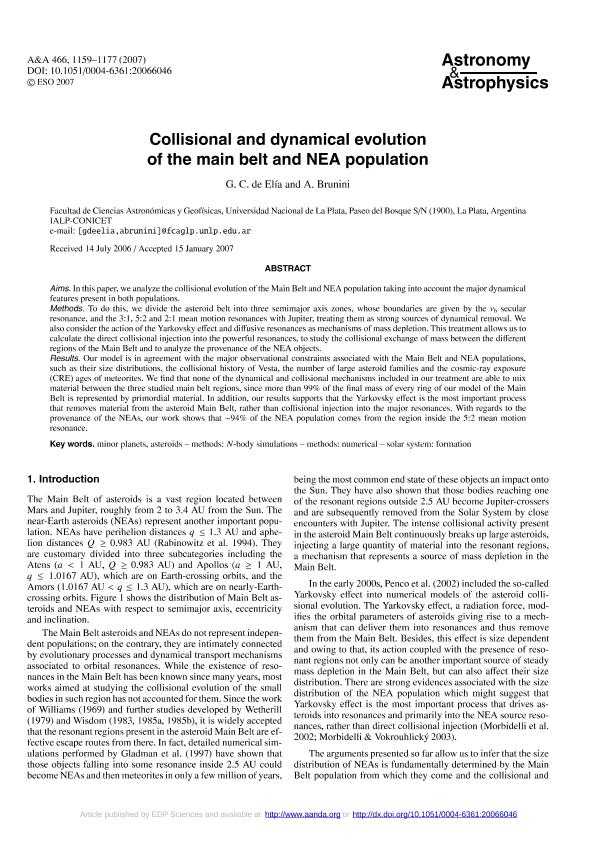Artículo
Collisional and dynamical evolution of the main belt and NEA population
Fecha de publicación:
05/2007
Editorial:
EDP Sciences
Revista:
Astronomy and Astrophysics
ISSN:
0004-6361
Idioma:
Inglés
Tipo de recurso:
Artículo publicado
Clasificación temática:
Resumen
Aims. In this paper, we analyze the collisional evolution of the Main Belt and NEA population taking into account the major dynamical features present in both populations. Methods. To do this, we divide the asteroid belt into three semimajor axis zones, whose boundaries are given by the V6, secular resonance, and the 3:1, 5:2 and 2:1 mean motion resonances with Jupiter, treating them as strong sources of dynamical removal. We also consider the action of the Yarkovsky effect and diffusive resonances as mechanisms of mass depletion. This treatment allows us to calculate the direct collisional injection into the powerful resonances, to study the collisional exchange of mass between the different regions of the Main Belt and to analyze the provenance of the NEA objects. Results. Our model is in agreement with the major observational constraints associated with the Main Belt and NEA populations, such as their size distributions, the collisional history of Vesta, the number of large asteroid families and the cosmic-ray exposure (CRE) ages of meteorites. We find that none of the dynamical and collisional mechanisms included in our treatment are able to mix material between the three studied main belt regions, since more than 99% of the final mass of every ring of our model of the Main Belt is represented by primordial material. In addition, our results supports that the Yarkovsky effect is the most important process that removes material from the asteroid Main Belt, rather than collisional injection into the major resonances. With regards to the provenance of the NEAs, our work shows that ∼94% of the NEA population comes from the region inside the 5:2 mean motion resonance. © ESO 2007.
Archivos asociados
Licencia
Identificadores
Colecciones
Articulos(IALP)
Articulos de INST.DE ASTROFISICA LA PLATA
Articulos de INST.DE ASTROFISICA LA PLATA
Citación
de Elia, Gonzalo Carlos; Brunini, Adrian; Collisional and dynamical evolution of the main belt and NEA population; EDP Sciences; Astronomy and Astrophysics; 466; 3; 5-2007; 1159-1177
Compartir
Altmétricas




